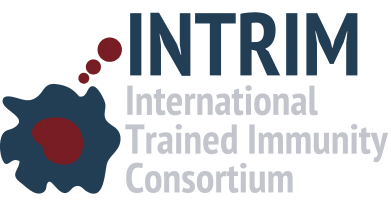Trained immunity: Fungal infections
Singapore Immunology Network (SIgN), Agency for Science, Technology and Research (A*STAR), Singapore
Research topic
Candida albicans (C. albicans) is a commensal fungus that colonizes the gastrointestinal (GI) tract of 40-60% of healthy adults. However, invasive candidiasis occurs all too frequently in hospitalized and immunocompromised patients, causing a severe disease associated with high mortality 1. With the increasing incidence of drug-resistant, multi-drug-resistant and also non-albicans Candida (NAC) species, it is imperative to develop alternative strategies to prevent and treat these life-threatening infections. Our working hypothesis is that understanding the ecology and evolution of Candida species in the mammalian gastrointestinal tract, and their complex and dynamic interactions with the host immune system and with other commensal microbes, will lead to the development of novel probiotic or vaccine strategies for the prevention of hospital-acquired fungal infections 2.
Using a combination of experimental and computational tools, our lab aims at understanding the evolution of host-pathogen interactions, the ecology of bacterial-fungal interactions, and the role played by the immune system and the gut microbiome in these processes. Studying bacterial-fungal interactions, we identified the transcription factor MIG1, expressed in C. albicans, to confer resistance against weak organic acids (WOAs) released by commensal bacteria to control yeast growth 3-5. In terms of host-fungal interactions, we reported the exposure of β-glucan on the surface of the Candida cell wall to highly correlate with competitive fitness of the fungi colonizing the mammalian GI tract 6, and that intraspecies diversity across different C. albicans clinical isolates is associated with large variation in immune responses along the commensalism-pathogenicity axis 7. Our group also recently developed a meta-total RNA sequencing (MeTRS) method based on shotgun sequencing of total RNA, which provides a valuable alternative platform for large-scale profiling of complex microbiomes, including bacteria and fungi, in human stool samples 8.
Beyond dissecting such complex and dynamic traits in the GI tract, we are actively collaborating with the group of Prof. Mihai Netea at Radboud University Medical Centre (Nijmegen, Netherlands) on the Human Functional Genomics Project (500FG cohort study) 9,10 and are currently exploring how the power of innate immune memory, a.k.a. ‘trained immunity’, can be harnessed to develop vaccines against candidiasis and other opportunistic infections.
Group members
- Norman PAVELKA, PhD, Principal Investigator
- Gloria TSO, PhD, Research Fellow
- Jose Antonio REALES-CALDERON, PhD, Research Fellow
- Tze Guan TAN, PhD, Research Fellow
- Ghee Chuan LAI, PhD, Research Fellow
- Alrina Shin Min TAN, BSc, Research Officer
- Ying Shiang LIM, BSc, Research Officer
Selected publications
1 Teoh, F. & Pavelka, N. How Chemotherapy Increases the Risk of Systemic Candidiasis in Cancer Patients: Current Paradigm and Future Directions. Pathogens 5, doi:10.3390/pathogens5010006 (2016).
2 Cottier, F. & Pavelka, N. Complexity and dynamics of host-fungal interactions. Immunol. Res., doi:10.1007/s12026-012-8265-y (2012).
3 Cottier, F. et al. The transcriptional stress response of Candida albicans to weak organic acids. G3 (Bethesda) 5, 497-505, doi:10.1534/g3.114.015941 (2015).
4 Cottier, F., Tan, A. S., Xu, X., Wang, Y. & Pavelka, N. MIG1 Regulates Resistance of Candida albicans against the Fungistatic Effect of Weak Organic Acids. Eukaryot. Cell 14, 1054-1061, doi:10.1128/EC.00129-15 (2015).
5 Cottier, F. et al. The Transcriptional Response of Candida albicans to Weak Organic Acids, Carbon Source, and MIG1 Inactivation Unveils a Role for HGT16 in Mediating the Fungistatic Effect of Acetic Acid. G3 (Bethesda) 7, 3597-3604, doi:10.1534/g3.117.300238 (2017).
6 Sem, X. et al. beta-glucan Exposure on the Fungal Cell Wall Tightly Correlates with Competitive Fitness of Candida Species in the Mouse Gastrointestinal Tract. Front. Cell. Infect. Microbiol. 6, 186, doi:10.3389/fcimb.2016.00186 (2016).
7 Schonherr, F. A. et al. The intraspecies diversity of C. albicans triggers qualitatively and temporally distinct host responses that determine the balance between commensalism and pathogenicity. Mucosal Immunol. 10, 1335-1350, doi:10.1038/mi.2017.2 (2017).
8 Cottier, F. et al. Advantages of meta-total RNA sequencing (MeTRS) over shotgun metagenomics and amplicon-based sequencing in the profiling of complex microbial communities. npj Biofilms and Microbiomes 4, 2, doi:10.1038/s41522-017-0046-x (2018).
9 Netea, M. G. et al. Understanding human immune function using the resources from the Human Functional Genomics Project. Nat. Med. 22, 831-833, doi:10.1038/nm.4140 (2016).
10 Ter Horst, R. et al. Host and Environmental Factors Influencing Individual Human Cytokine Responses. Cell 167, 1111-1124 e1113, doi:10.1016/j.cell.2016.10.018 (2016).
Financial support
- A*STAR Investigatorship Award (2011-2018)
- NMRC Bedside-and-Bench Grant (2012-2017)
- SIgN Core Funding (2011-)
